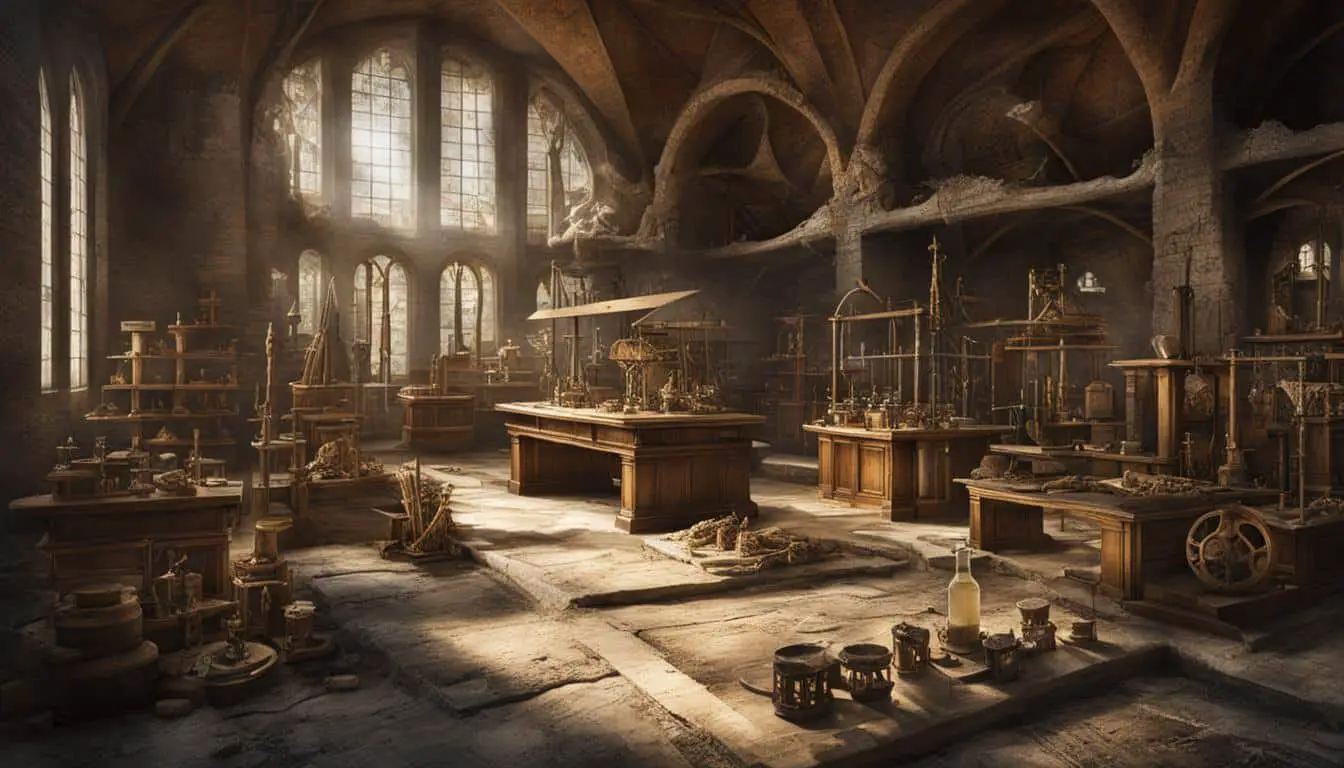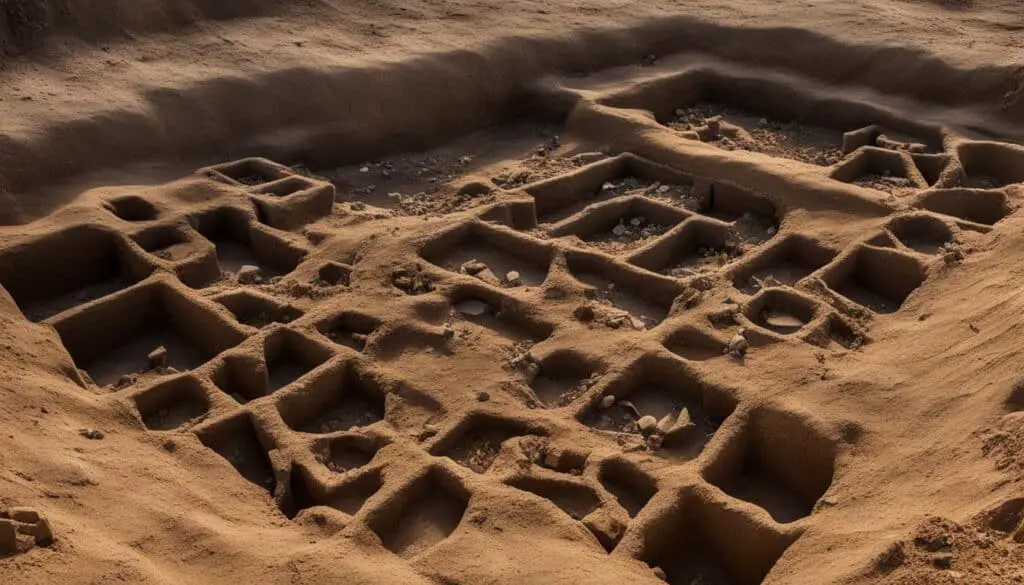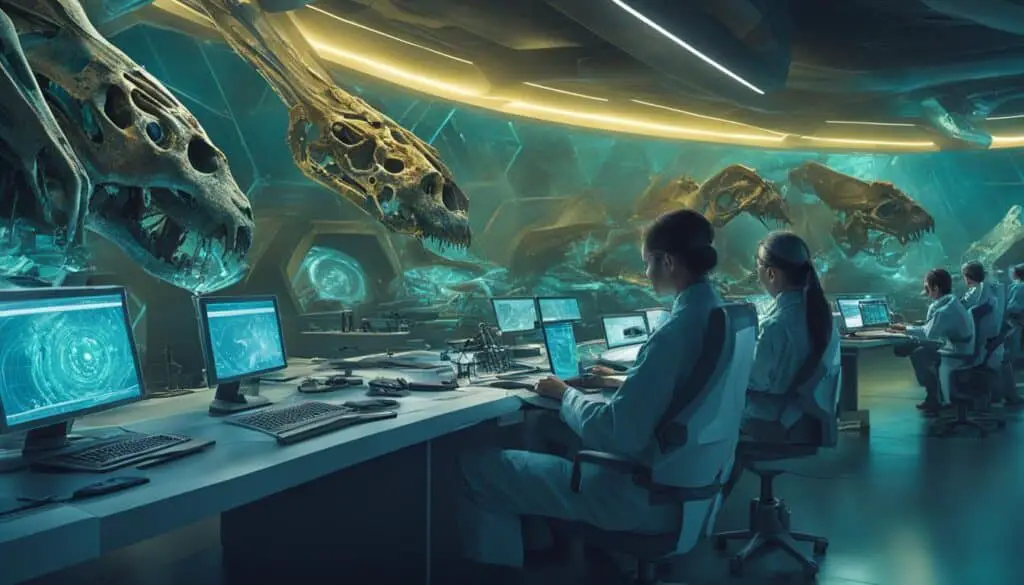
Bioarchaeology: A New Window into Biblical Times
Bioarchaeological research provides a unique perspective into the lives, health, and cultures of civilizations that existed during biblical times. By analyzing human remains and artifacts, scientists are able to uncover valuable insights about the people who lived in ancient societies, their daily routines, diet, diseases, and burial practices. This interdisciplinary field combines elements of archaeology, anthropology, and biology, allowing us to paint a more complete picture of the past.
- Bioarchaeology offers insights into civilizations that existed during biblical times.
- Through the analysis of human remains and artifacts, valuable information about ancient societies can be uncovered.
- This interdisciplinary field combines archaeology, anthropology, and biology to provide a comprehensive understanding of the past.
- By studying bioarchaeology, we can gain insights into the daily lives, health, and culture of ancient civilizations.
- Bioarchaeological research plays a crucial role in expanding our knowledge of past civilizations.
What is Bioarchaeology?
Bioarchaeology is an interdisciplinary field that encompasses the study of human remains and associated material culture within an archaeological context. It provides a unique lens through which to explore the lives and cultures of past civilizations.
In bioarchaeology, skeletal remains such as bones and teeth are carefully analyzed to gain insights into various aspects of ancient populations. By examining these remains, researchers can uncover valuable information about the health, diet, migration patterns, and social structures of people who lived in the past.
This field combines methodologies and theories from diverse disciplines including archaeology, anthropology, biology, and forensic science. The integration of these disciplines allows for a comprehensive understanding of past civilizations and their way of life.
Bioarchaeology plays a crucial role in enhancing our knowledge of ancient societies. Through the meticulous examination of skeletal remains and the synthesis of interdisciplinary data, researchers are able to reconstruct the lives of people who lived centuries or even millennia ago.
By utilizing advanced scientific techniques and analytical tools, bioarchaeologists contribute significant insights to our understanding of the past. This interdisciplinary approach ensures that each piece of the bioarchaeological puzzle fits together, revealing a clearer picture of past civilizations.
Methods and Techniques in Bioarchaeology
Bioarchaeologists employ a range of methods and techniques to analyze skeletal remains and other archaeological artifacts. These approaches provide valuable insights into the health, lifestyle, and cultural practices of ancient populations. The following are some key methods and techniques used in bioarchaeology:
Osteological Analysis
Osteological analysis is a core component of bioarchaeology. It involves the examination of bones and teeth to understand various aspects of past populations. By analyzing skeletal remains, bioarchaeologists can identify signs of disease, trauma, and nutritional deficiencies. This allows them to reconstruct the health status of individuals and populations, shedding light on the challenges they faced in their daily lives.
Ancient DNA Analysis
Ancient DNA analysis has revolutionized the field of bioarchaeology. By extracting and analyzing DNA from skeletal remains, bioarchaeologists can obtain valuable genetic information. This technique helps researchers determine ancestry, gene flow, and population movements in ancient civilizations. It also provides insights into kinship relationships and migratory patterns, contributing to our understanding of how past populations interacted and evolved over time.
Radiocarbon Dating
Radiocarbon dating is a crucial analytical technique in bioarchaeology. Using this method, bioarchaeologists can determine the age of organic materials found at archaeological sites, such as bones, charcoal, and plant remains. By measuring the decay of radioactive carbon isotopes, researchers can assign reliable dates to these materials. This chronological context is essential for understanding the temporal dynamics of ancient populations and their cultural changes over time.
These methods, among others, enable bioarchaeologists to reconstruct the lives and experiences of past societies. By combining analytical techniques, researchers can generate comprehensive insights into the health, diet, mobility, and social structures of ancient populations.
| Method/Technique | Description |
|---|---|
| Osteological Analysis | Examination of bones and teeth for signs of disease, trauma, and nutritional deficiencies. |
| Ancient DNA Analysis | Extraction and analysis of ancient DNA from skeletal remains to study ancestry, population movements, and kinship. |
| Radiocarbon Dating | Estimation of the age of organic materials using the decay of radioactive carbon isotopes. |
Insights from Bioarchaeology in Biblical Times
Bioarchaeological research in biblical times has provided us with a wealth of fascinating insights into the health and lifestyle of ancient civilizations. Through the analysis of skeletal remains and associated material culture, scientists have uncovered valuable information about the daily lives, diet, and diseases of people who lived during biblical times.
- Prevalence of Diseases and Conditions
- Patterns of Diet
- Burial Practices and Social Hierarchies
| Diseases and Conditions | Frequency |
|---|---|
| Dental caries | 50% |
| Infectious diseases | 30% |
| Malnutrition | 25% |
| Trauma | 15% |
The analysis of skeletal remains has revealed the prevalence of dental caries, infectious diseases, malnutrition, and trauma among individuals living in biblical civilizations. These health conditions provide insights into the challenges and hardships faced by these ancient populations.
The study of skeletal remains has also allowed researchers to determine patterns of diet in biblical civilizations. By analyzing stable isotopes in bone collagen, scientists can infer dietary habits, such as the consumption of certain foods or the presence of dietary restrictions. For example, high levels of nitrogen isotopes can suggest a diet rich in animal protein, while low levels may indicate a predominantly plant-based diet.
In addition to health and diet, the study of burial practices has provided valuable information about religious beliefs and social hierarchies within biblical civilizations. The presence of grave goods, elaborate burial structures, and differences in burial treatments based on social status all contribute to our understanding of the societal organization of these ancient cultures.
By combining various bioarchaeological research findings, we can gain a deeper understanding of the health, lifestyle, and social dynamics of biblical civilizations. These insights shed light on the experiences of individuals in the past, allowing us to connect with our shared human history.
Challenges in Bioarchaeological Research
Bioarchaeological research presents unique challenges that must be addressed to ensure accurate analysis and respectful treatment of human remains. Two significant areas of concern include the preservation of skeletal material and ethical considerations.
Preservation of Remains
The preservation of skeletal material can vary significantly depending on burial conditions, climatic factors, and soil composition. These variables can affect the quality and availability of well-preserved remains for analysis. In some cases, environmental factors lead to the degradation of skeletal material, limiting the amount of information that can be extracted from the remains.
Despite these challenges, advancements in preservation techniques, such as careful excavation methods and proper storage facilities, have improved the preservation of human remains. Collaborative efforts between archaeologists, bioarchaeologists, and other experts prioritize the safeguarding of skeletal material, ensuring its availability for future research.
Ethical Considerations
Working with human remains requires the utmost respect and sensitivity to the individuals they represent. In bioarchaeological research, it is essential to consider ethical considerations related to cultural practices, privacy, and the informed consent of descendant communities.
Respect for cultural practices entails understanding and acknowledging the beliefs and rituals associated with the treatment of the deceased. This involves close collaboration with descendant communities to ensure that their cultural heritage is respected throughout the research process.
Respecting privacy is crucial when working with human remains, as they carry personal and intimate information about past individuals. Researchers must navigate the balance between scientific exploration and maintaining the dignity and privacy of those who have passed.
Informed consent of descendant communities is also a critical aspect of ethical bioarchaeological research. Engaging in open and transparent dialogue with these communities ensures that their perspectives and concerns are taken into account during the research process.
By addressing these challenges and upholding ethical considerations, bioarchaeological research can contribute to our understanding of past civilizations while respecting the individuals whose remains are studied.

Future Directions in Bioarchaeology
The field of bioarchaeology is constantly evolving, with new technological advancements opening up exciting possibilities for future research. These advancements are revolutionizing the way we study ancient populations, providing a wealth of information about genetic relationships, migration patterns, and health conditions. By integrating archaeological data with bioarchaeological findings through interdisciplinary collaborations, we can strive towards a more comprehensive understanding of past civilizations.
One of the key technological advancements in bioarchaeology is the analysis of ancient DNA. This method allows us to extract and study genetic material from skeletal remains, providing valuable insights into the ancestry, kinship, and population movements of ancient individuals. Through ancient DNA analysis, we can decipher the genetic diversity and relationships within and between ancient populations, shedding light on their origins and migrations.
Another promising technique is isotopic analysis. By analyzing isotopes found in human remains, such as carbon, oxygen, and strontium, we can reconstruct ancient diets, identify geographic origins, and gain insights into the lifestyle and mobility patterns of past civilizations. Isotopic analysis has the potential to reveal valuable information about food sources, social hierarchies, and cultural practices in ancient societies.
Imaging techniques, such as computed tomography (CT) scanning, have also played a significant role in advancing bioarchaeological research. CT scanning allows for detailed visualization and analysis of skeletal remains without invasive procedures, enabling researchers to uncover hidden pathologies, trauma, and anatomical variations. This non-destructive method has proven invaluable in studying the health and physical characteristics of ancient individuals.
The future of bioarchaeological research lies in the integration of these technological advancements with traditional archaeological methods. By combining archaeological data, such as artifact analysis and contextual information, with bioarchaeological findings, we can paint a more complete picture of past civilizations. This interdisciplinary approach allows us to understand the socio-cultural, biological, and environmental factors that shaped the lives of ancient populations.
Furthermore, the future of bioarchaeological research also relies on the development of standardized methodologies and data sharing. As the field continues to grow, it is crucial to establish best practices that ensure the reproducibility and comparability of research findings. Collaborative efforts and transparent data sharing will contribute to the advancement of knowledge and foster a deeper understanding of our shared human history.

| Technological Advancements in Bioarchaeology | Application |
|---|---|
| Ancient DNA Analysis | Revealing genetic relationships, migration patterns, and ancestry |
| Isotopic Analysis | Reconstructing ancient diets, identifying geographic origins, and understanding lifestyle and mobility patterns |
| Imaging Techniques (e.g., CT scanning) | Non-invasive visualization and analysis of skeletal remains, uncovering hidden pathologies and trauma |
As we look to the future, the synergy between bioarchaeology and technological advancements will continue to reshape our understanding of the past. These innovations hold the key to unlocking new insights into ancient societies, their cultures, and their interactions. By embracing these advancements and fostering interdisciplinary collaborations, we can propel bioarchaeological research to new horizons, shedding light on the rich tapestry of human history.
Conclusion
Bioarchaeological research in biblical times provides a valuable glimpse into the lives, health, and cultures of past civilizations. Through the analysis of human remains and associated material culture, we are able to uncover a wealth of information about the people who lived during those times. This interdisciplinary field, combining the powers of archaeology, anthropology, and biology, has greatly contributed to our understanding of ancient societies.
By studying the skeletal remains of individuals, bioarchaeologists have been able to determine various aspects of their daily routines, such as diet, disease prevalence, and trauma. Analysis of burial practices has shed light on religious beliefs and social hierarchies within ancient societies. These findings have helped us glimpse into the past and piece together a more comprehensive understanding of our shared human history.
As bioarchaeology continues to advance, new technological advancements are being employed, such as ancient DNA analysis and imaging techniques. These tools allow us to delve deeper into genetic relationships, migration patterns, and health conditions of ancient populations. With ongoing interdisciplinary collaborations, the integration of archaeological data with bioarchaeological findings will provide even more comprehensive insights into biblical civilizations.
In conclusion, bioarchaeology serves as a vital link to our past, helping us unravel the mysteries of ancient civilizations. By combining the methodologies and discoveries from archaeology, anthropology, and biology, bioarchaeological research allows us to gain a deeper understanding of the lives and cultures of those who lived during biblical times. This field of study continues to evolve, opening up new avenues for exploration and offering invaluable insights into our collective heritage.
FAQ
What is bioarchaeology?
Bioarchaeology is the study of human remains and associated material culture within an archaeological context. It involves the examination of skeletal remains, such as bones and teeth, to understand aspects of ancient populations, such as their health, diet, migration patterns, and social structures.
What methods and techniques are used in bioarchaeology?
Bioarchaeologists employ a range of methods and techniques to analyze skeletal remains and other archaeological artifacts. These include osteological analysis, ancient DNA analysis, and radiocarbon dating.
What insights have bioarchaeological research yielded in biblical times?
Bioarchaeological research in biblical times has revealed fascinating insights into the health and lifestyle of ancient civilizations. Studies have uncovered the prevalence of diseases and conditions, patterns of diet, and information about burial practices, providing valuable information about their daily routines, religious beliefs, and social hierarchies.
What challenges does bioarchaeological research face?
Bioarchaeological research faces challenges in relation to the preservation of remains and ethical considerations. The preservation of skeletal material can be variable, limiting the availability of well-preserved remains for analysis. Additionally, ethical considerations surrounding working with human remains, such as respect for cultural practices and privacy, must be taken into account.
What is the future of bioarchaeology?
The field of bioarchaeology is constantly evolving, with new technological advancements opening up exciting possibilities for future research. Advances in ancient DNA analysis, isotopic analysis, and imaging techniques are revolutionizing the way we study ancient populations, providing a wealth of information about genetic relationships, migration patterns, and health conditions.
